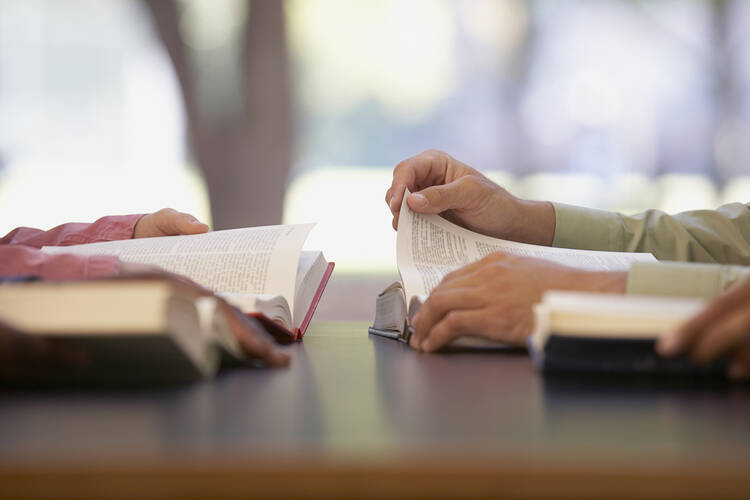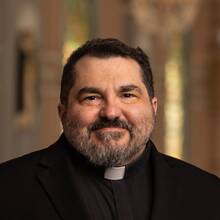Keep and Ponder
The church has found many reasons to mark the importance of today’s feast. Aside from marking the calendar’s turn to the new year, an appropriate time for prayer and thanksgiving, this day is also the eighth day after the birth of Christ. Older Catholics can probably remember a time when this feast celebrated Jesus’ circumcision, which according to Jewish law took place on the eighth day after his birth. At various times in history, today’s feast also celebrated the Holy Name of Jesus, a devotion we now celebrate on Jan. 3. References to each of those commemorations appear in today’s Gospel. Some of the earliest celebrations of this feast in Rome, however, focused attention on Mary’s mission to be the mother of God, and it was that mission that inspired later generations of Christians.
Mary kept all these things, reflecting on them in her heart (Lk 2:19)
“Mary kept all these things, reflecting on them in her heart.” An old tradition says that Luke the evangelist knew the Blessed Mother and wove her memories into his Gospel account. He presents the annunciation, birth and infancy of Jesus from her perspective, and he places her among the disciples in the upper room in the days before the first Pentecost. His repeated statement that she “kept these things and reflected on them in her heart” is his acknowledgement of the wisdom she had accrued after a lifetime of contemplating Christ and discerning his word in the world.
It is impossible to ascertain the truth of this tradition after all these centuries, but it is certain that Mary becomes an important point of continuity in Luke’s Gospel. She is there almost from the beginning, reflecting on events in her son’s life and discerning their meaning. She is there again among his disciples, after almost everything has changed, as they discover their new mission in community. She is throughout a symbol of unencumbered human love for Christ, bearing him into the world and seeking him in the signs of the times. Today’s feast reminds us of her role in salvation history both as the mother of God and also the mother of the church.
The un-self-conscious way she gave herself to her son’s mission is the best gift she has given to his disciples. Her freedom to say yes bore him into the world. After that, her thoughtful discernment made her one of the first to understand Christ’s preaching and signs, and when his perplexed disciples gathered together in the days before Pentecost, her example must have given them hope. Throughout the Acts of the Apostles, Luke shows the early church behaving as Mary did, giving itself to completely to Christ’s mission and making time for discernment and reflection as it bore Christ into the world. Luke understands Mary as a symbol of the church at such a fundamental level that we can almost miss his emphasis. Her freedom to serve Christ’s mission, bring him into the world and ponder the significance of his life becomes the pattern for both collective and individual discipleship.
The world first received Jesus through Mary, but the task is not yet complete. The liberation Jesus preached has not yet become a reality. His disciples in the church are charged to bear him into the world. We have now become the point of continuity that Mary was in Luke’s Gospel. When we give ourselves over to Christ’s mission in big ways and small, we bring Christ into the world in new ways. Part of our discipleship is continuing to seek out Christ as he is already at work in the world, to let him surprise us with all the unexpected twists and turns of salvation history as it continues to unfold. If we seek him in the signs of the times, we can make his presence known to all whose slavery will end when his love appears. This is what Mary proclaimed when she became the mother of God, and this is the mission his disciples can continue today following her example.
This article also appeared in print, under the headline “Keep and Ponder,” in the December 19-26, 2016, issue.








